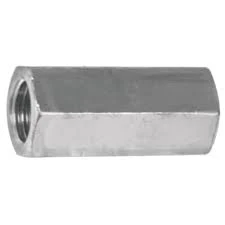-
Cangzhou Yulong Steel Co., Ltd.
-
Phone:
+86 13303177267 -
Email:
admin@ylsteelfittings.com
- English
- Arabic
- Italian
- Spanish
- Portuguese
- German
- kazakh
- Persian
- Greek
- French
- Russian
- Polish
- Thai
- Indonesian
- Vietnamese
- Zulu
- Korean
- Uzbek
- Hindi
- Serbian
- Malay
- Ukrainian
- Gujarati
- Haitian Creole
- hausa
- hawaiian
- Hebrew
- Miao
- Hungarian
- Icelandic
- igbo
- irish
- Japanese
- Javanese
- Kannada
- Khmer
- Rwandese
- Afrikaans
- Albanian
- Amharic
- Armenian
- Azerbaijani
- Basque
- Belarusian
- Bengali
- Bosnian
- Bulgarian
- Catalan
- Cebuano
- China
- China (Taiwan)
- Corsican
- Croatian
- Czech
- Danish
- Esperanto
- Estonian
- Finnish
- Frisian
- Galician
- Georgian
- Kurdish
- Kyrgyz
- Lao
- Latin
- Latvian
- Lithuanian
- Luxembourgish
- Macedonian
- Malgashi
- Malayalam
- Maltese
- Maori
- Marathi
- Mongolian
- Myanmar
- Nepali
- Norwegian
- Norwegian
- Occitan
- Pashto
- Dutch
- Punjabi
- Romanian
- Samoan
- Scottish Gaelic
- Sesotho
- Shona
- Sindhi
- Sinhala
- Slovak
- Slovenian
- Somali
- Sundanese
- Swahili
- Swedish
- Tagalog
- Tajik
- Tamil
- Tatar
- Telugu
- Turkish
- Turkmen
- Urdu
- Uighur
- Welsh
- Bantu
- Yiddish
- Yoruba

Sep . 12, 2024 09:29 Back to list
4 Inch Weld On Pipe Cap - Durable and Reliable Pipeline Solutions
Understanding 4 Weld-On Pipe Caps A Comprehensive Guide
Pipe caps are essential components in various piping systems, serving the vital function of sealing the ends of pipes. Specifically, 4-inch weld-on pipe caps are prevalent in numerous industries including construction, plumbing, and oil and gas. In this article, we will explore the importance, applications, manufacturing materials, installation processes, and maintenance of these pipe caps.
Importance of Pipe Caps
Pipe caps serve multiple purposes in a piping system. First and foremost, they prevent the ingress of contaminants, ensuring that the internal flow remains uncontaminated. This is crucial in industries such as food processing and pharmaceuticals, where hygiene standards must be strictly adhered to. Additionally, weld-on pipe caps provide structural integrity by reinforcing the pipe ends, preventing damage and wear that could occur over time.
Applications of 4 Weld-On Pipe Caps
The versatility of 4-inch weld-on pipe caps makes them suitable for a range of applications. They are commonly used in
1. Water Treatment Facilities In these settings, water is often transported through large piping systems, and pipe caps are used to seal off unused ends or sections temporarily. 2. Oil and Gas Industries Here, weld-on pipe caps secure the ends of piping systems, preventing leaks and ensuring the safe and efficient transportation of hazardous materials.
3. Construction Projects Weld-on caps are frequently employed in construction where steel or plastic piping systems are involved, providing a reliable and permanent seal.
4. HVAC Systems In heating, ventilation, and air conditioning applications, pipe caps are used to close off ducting or piping, maintaining system efficiency.
Materials Used
Weld-on pipe caps are manufactured from various materials, which often include
- Carbon Steel Known for its strength and durability, carbon steel is commonly used in high-pressure applications. - Stainless Steel This material is favored for its corrosion resistance, especially in environments exposed to moisture and chemicals.
4 inch weld on pipe cap

- PVC and CPVC These plastic alternatives are lightweight and often used in less extreme conditions, such as in drainage or venting systems.
Choosing the right material for a specific application depends on factors such as the types of fluids being transported, temperature ranges, and exposure conditions.
Installation Process
Installing a 4 weld-on pipe cap requires precision and care. The process generally involves
1. Preparation Ensure that the pipe end is clean and free of debris. This step is critical for achieving a strong weld.
2. Alignment Position the cap over the end of the pipe, ensuring it is aligned properly to avoid misalignment during welding.
3. Welding Use a welding machine suitable for the material of the pipe cap. The welding process should follow appropriate techniques to ensure a strong, leak-resistant seal.
4. Cooling Allow the weld to cool properly before testing the system for leaks. This ensures structural integrity and proper fitting.
Maintenance
Maintaining weld-on pipe caps is essential to ensure longevity and efficacy. Regular inspections should be conducted to check for signs of corrosion or leaks. In high-stress applications, it’s advisable to monitor the integrity of the welds periodically.
Conclusion
In summary, 4 weld-on pipe caps are significant components in piping systems across various industries. Their ability to provide secure seals and structural stability makes them indispensable. Understanding their applications, materials, installation processes, and maintenance practices helps ensure a reliable and efficient piping system, ultimately contributing to the safety and operational effectiveness of industrial processes.
Latest news
-
ANSI 150P SS304 SO FLANGE
NewsFeb.14,2025
-
ASTM A333GR6 STEEL PIPE
NewsJan.20,2025
-
ANSI B16.5 WELDING NECK FLANGE
NewsJan.15,2026
-
ANSI B16.5 SLIP-ON FLANGE
NewsApr.19,2024
-
SABS 1123 FLANGE
NewsJan.15,2025
-
DIN86044 PLATE FLANGE
NewsApr.19,2024
-
DIN2527 BLIND FLANGE
NewsApr.12,2024
-
JIS B2311 Butt-Welding Fittings LR/SR 45°/90° /180°Seamless/Weld
NewsApr.23,2024











